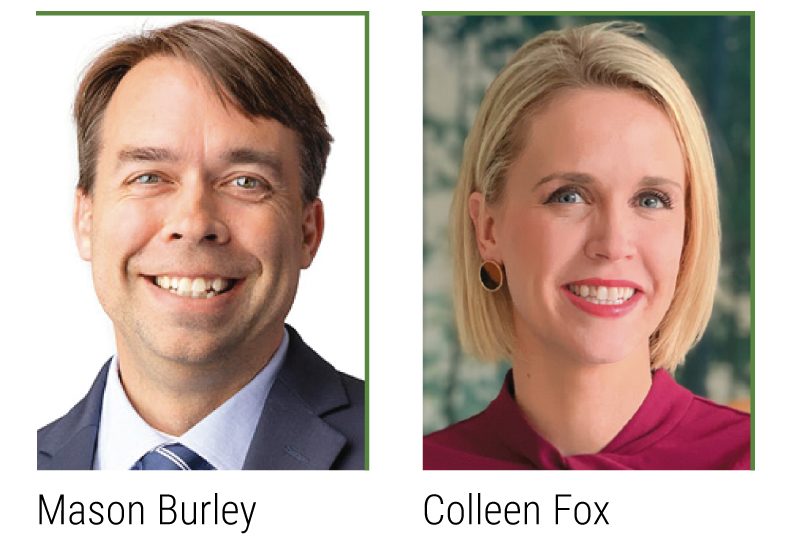
Home » Reimagining community investment in the INW
Reimagining community investment in the INW
Huge transfer of wealth expected to come from baby boomer generation

October 22, 2020
There is a tsunami coming. Before we cause needless alarm, this is not yet another unexpected emergency, but a demographic tidal wave that we have known about for some time. The baby boom generation – 73 million Americans born between 1946 and 1964 – is entering retirement, with about 10,000 persons reaching age 65 each and every day.
And like those before them, this generation will begin preparing for the type of legacy to leave behind. However, unlike previous generations, the size of this “silver tsunami” is unprecedented, giving rise to the greatest generational transfer of wealth in our nation’s history.
According to the Chronicle of Philanthropy, in the next 50 years, an estimated $97 trillion in household wealth will have transferred to the next generation in the U.S. Last year, Innovia Foundation worked with Locus Impact Investing to determine the impact of the coming transfer of wealth in this region. We found that during this period, an estimated wealth transfer of $376 billion will occur among households in Eastern Washington and northern Idaho, with $42 billion transferring in the next 10 years, much of it potentially leaving this region.
What does this great generational pivot mean for the future of our region? Certainly, we can’t see through a crystal ball to understand all of the potential implications. But we are confident there is a window of opportunity to make meaningful change at this unparalleled point in our history.
While it can be difficult to begin a discussion about wills or estate plans, starting or revisiting this process can provide enormous peace of mind. And, in addition to leaving assets to your children or other heirs, through the estate planning process, you also can become a philanthropist. Imagine, for example, if collectively we directed 5% of this coming transfer of wealth to put back into the community we all call home. Setting aside $2 billion for this community (5% of this coming 10-year transfer) could generate on average $89 million per year over the next 20 years. This type of philanthropic support could strengthen civic institutions, provide small business support, bring people together in gathering spaces and sustain a community of opportunity that could meet our coming challenges head on. A donation of 5% will allow you to provide for your heirs while potentially reshaping our community’s future.
Leaving 5% for charitable community investments would create a colossal impact, but like any massive movement, the momentum starts with first steps. What type of steps can you take to leave a charitable contribution to community causes that you care about? Thankfully, philanthropy can involve anybody and everybody and even today, you can take one or more of the following steps.
•Consider your nonliquid assets as future charitable gifts. A sizeable portion of assets from each generation are not held in cash. The greatest potential for growing philanthropy comes from those noncash items – real estate, life insurance, securities, and even art collections – that can be converted in full or part to charitable gifts during estate planning. There may also be significant tax incentives for these types of gifts.
•A simple bequest in your will or estate plan can ensure that a percentage of your estate creates a lasting impact for nonprofits and charitable causes that you care about. Bequests allow you to provide for children and grandchildren, while determining in advance the amount you want to leave to charity. Contact an estate planning attorney to get started, or to update your current plan.
•Start a conversation with local organizations committed to a shared cause. Purpose-driven philanthropy involves more than financial gifts. Your time, talent, and experience can and should be part of your philanthropy. Get to know leadership and staff at the nonprofit organizations working hard to make positive community change. You can start by reading an annual report or newsletter and extend your involvement through candid conversations and volunteer efforts. The experiences you gain will help you make both memories and smart decisions about where your contribution can do the most good.
•Tap the power of social returns. We typically consider return on investment in financial terms, but thinking as a philanthropist means thoughtfully considering the community benefit that flows from generous giving. Increasingly, the growth of capital is not the only consideration as impact-oriented philanthropists also seek to understand the measurable outcomes associated with charitable giving. Philanthropists can work directly with advisers at foundations and utilize new tools such as GuideStar’s Charting Impact program or Charity Navigator’s Encompass Rating System to see directly how their donations translate into true impact.
Philanthropy starts with your personal and family values and allows you to join with like-minded neighbors working to make a real difference in this community. The possibilities for truly making a difference and building strong, vibrant communities has never been greater. We are entering a period during which the next generation will shift from contributions in the workplace to investments in the community. This tsunami is coming with enormous potential energy that can leave in its wake a positive legacy for generations to come.
Mason H. Burley is the director of community impact at Innovia Foundation. Colleen M. Fox is the chief philanthropy officer at Providence Health Care Foundation.
Latest News Up Close Banking & Finance
Related Articles
Related Products
Related Events

![Brad head shot[1] web](https://www.spokanejournal.com/ext/resources/2025/03/10/thumb/Brad-Head-Shot[1]_web.jpg?1741642753)

